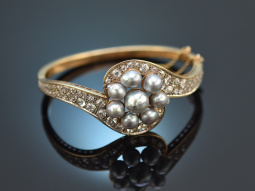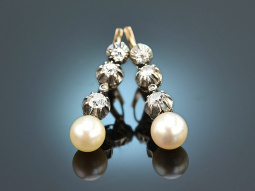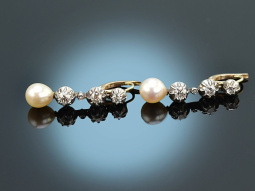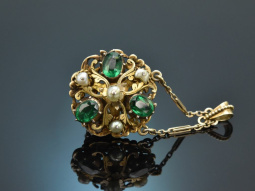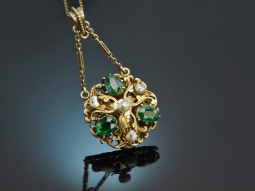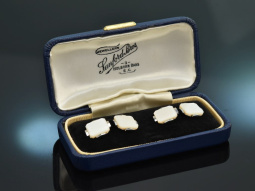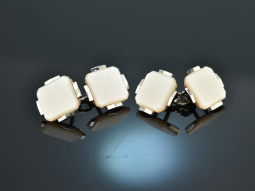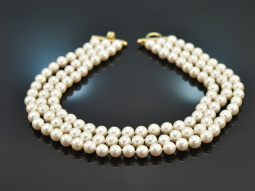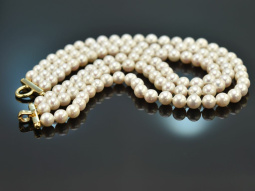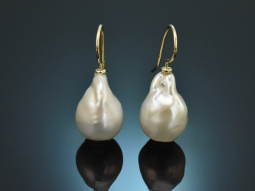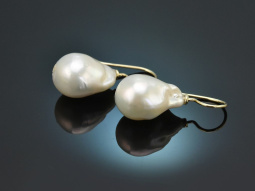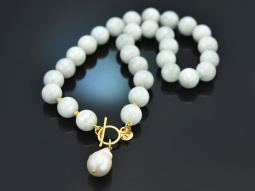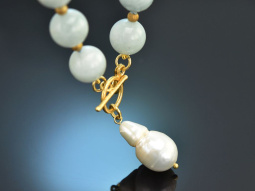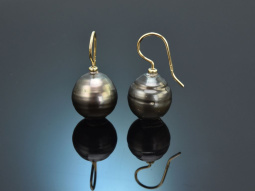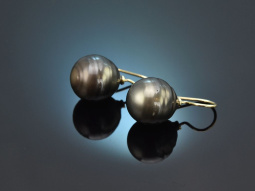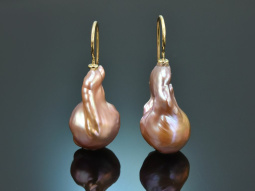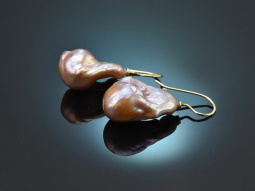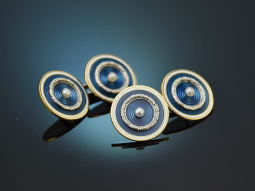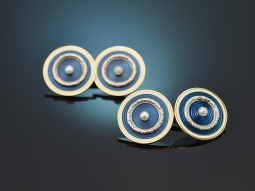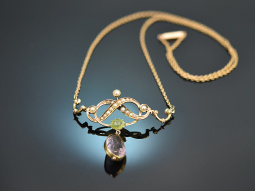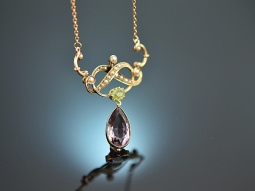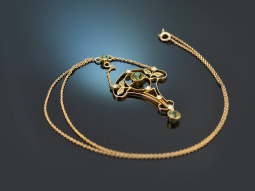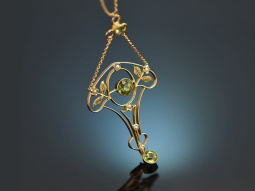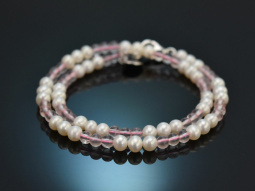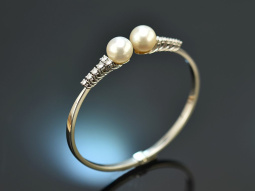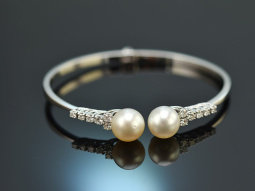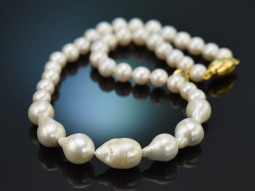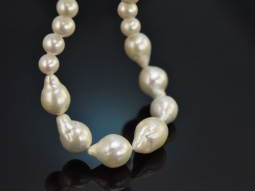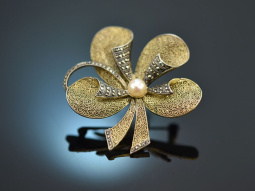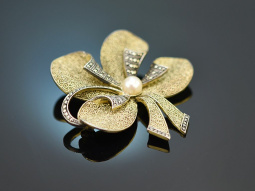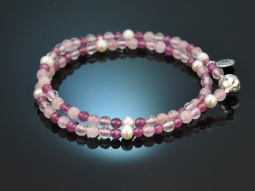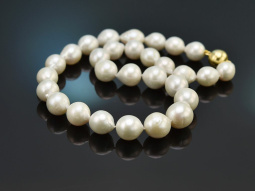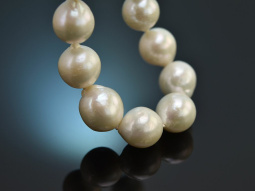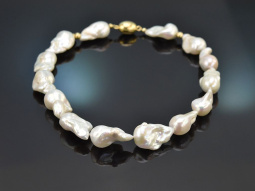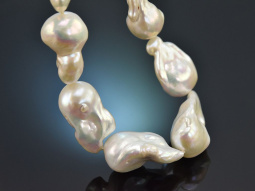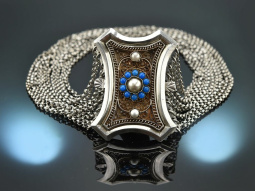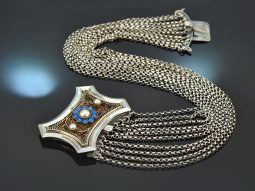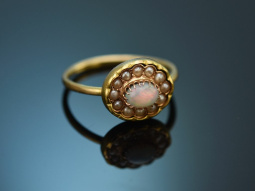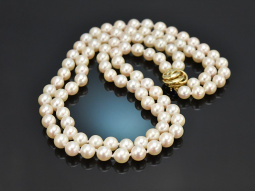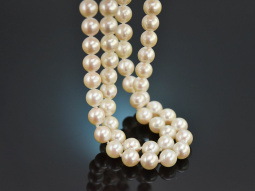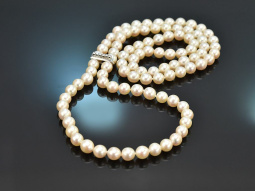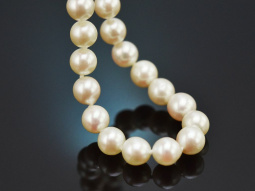Pearls
Pearls have long fascinated us with their velvety sheen, known as lustre, and are a true classic in jewellery because they are absolutely timeless and always ensure a sophisticated look. Pearl jewellery is therefore a real all-rounder that can be combined in both traditional and modern ways! Find out more »
The formation of a natural pearl
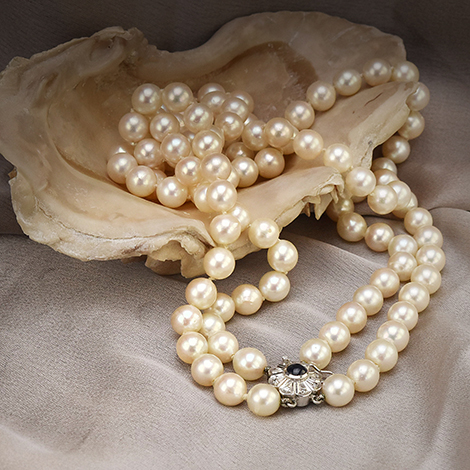
Pearls are formed exclusively in certain pearl-forming mussels whose tissue has been damaged by foreign bodies that have penetrated it. The epithelial cells of the shell then envelop this foreign body with several layers of mother-of-pearl. This process can take several years and is actually a protective reaction of the shell.
It is therefore not surprising that natural pearls – also known as orient pearls – are extremely rare and hardly available on today's jewellery market.
The advent of cultured pearls
The first completely round cultured pearls conquered the global market in the 1920s. Modern jewellery with pearls today consists almost exclusively of cultured pearls. If these are not round but irregularly shaped, they are called baroque pearls.
In pearl farming, small grafts are inserted into the mussel by human hands and then covered with layers of mother-of-pearl. Pearls are cultivated in both fresh water and salt water.
Since cultured pearls are also a natural growth process and an organic end product, significant quality differences must be expected with each harvest.
The top 5 cultured pearls
Pearl jewellery is made from different types of pearls, which vary in origin, shape and colour and are valued according to their different qualities.
Freshwater
Freshwater cultured pearls offer a wide variety of shapes and colours. They are produced in lakes and rivers, where the appropriate mussels are easier to cultivate. The yield is also often high, making this type of pearl more affordable than others.
So if you are looking for inexpensive pearl necklaces, a pearl necklace made from this type of pearl is recommended.
Akoya
These are Japanese or Chinese saltwater pearls whose natural colour ranges from white to cream. Akoya cultured pearls are characterised by their intense lustre and are usually sold in sizes up to 10 mm. In our online shop, we also offer a beautiful selection of matching vintage pearl necklaces.
As the Akoya mussel is more susceptible to temperature fluctuations and the growth of its pearls is relatively slow, Akoya pearls are more expensive.
Tahiti
Tahitian cultured pearls captivate with their typical silver-grey colour and are particularly prized for their size and orient. This refers to the natural lustre of a pearl and ranges from blue to green to pink in Tahitian pearls. In combination with the grey undertone, this creates a beautiful play of colours.
Even in small numbers, Tahitian cultured pearls can therefore have a big impact. A simple pair of pearl earrings can look extremely elegant and do not need any additional accessories.
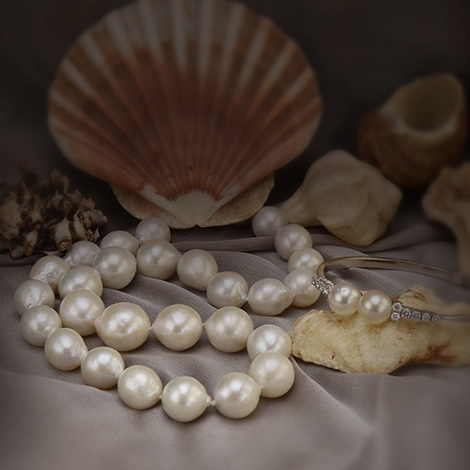
South Sea
South Sea cultured pearls are among the largest pearls and can grow to a size of 20 mm. This makes them one of the most popular and also most expensive pearls.
South Sea cultured pearls are known for their rich golden hue, but also come in white and silver. This makes them ideal for combining with diamonds and coloured stones, but they also look stunning as minimalist pearl stud earrings, rings or pendants.
Seed pearls
Seed pearls are very small natural pearls that form without human intervention in a shell. They are often found in
